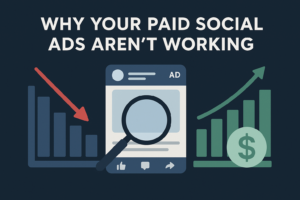
Paid Social Media ROAS
Why Your Paid Social Media Ads Aren’t Delivering ROAS—And How to Fix It You’ve invested in paid social media advertising. You’ve committed budget, time, and
AI DIGITAL MARKETING AGENCY
For many businesses, low search visibility is a persistent challenge that directly impacts their ability to attract qualified traffic and convert potential customers. Without strong visibility in search engines, even the most compelling products or services may remain undiscovered. However, through a comprehensive and strategic SEO approach, brands can significantly improve their rankings and position themselves in front of the right audience at the right time.
The foundation of any successful SEO campaign begins with robust keyword research. This goes beyond simply identifying high-volume search terms. Brands must uncover long-tail keywords, question-based queries, and search terms that reflect various stages of user intent—whether the user is researching, comparing solutions, or ready to make a purchase. Tools such as SEMrush, Ahrefs, and Moz are essential in uncovering these valuable opportunities.


Why Your Paid Social Media Ads Aren’t Delivering ROAS—And How to Fix It You’ve invested in paid social media advertising. You’ve committed budget, time, and

Generative Engine Optimization (GEO): The Future of Search and How It Differs from SEO As digital marketing continues to evolve, search is undergoing a radical

Updated Best Practices for Building a Brand Presence on YouTube (2025) YouTube continues to be a dominant platform for video content, offering businesses unparalleled opportunities

Best Practices for Building a Brand Presence on Instagram (2025) Instagram continues to dominate as a platform for visual storytelling, brand development, and audience engagement.

10 Proven Social Media Strategies to Dominate in 2025 In the dynamic landscape of 2025, mastering social media requires a strategic approach tailored to evolving

Updated Best Practices for Building a Brand Presence on X (2025) X (formerly Twitter) continues to be a powerful platform for real-time conversations, customer engagement,